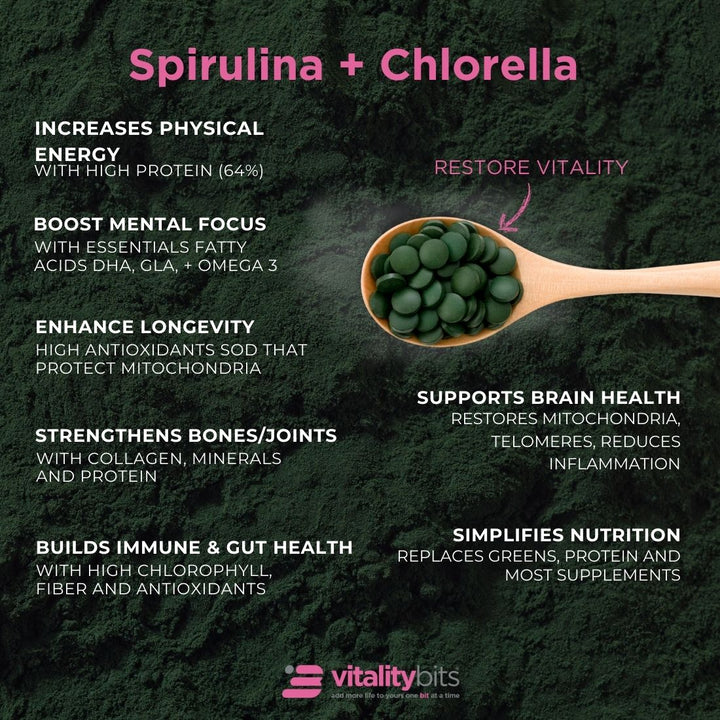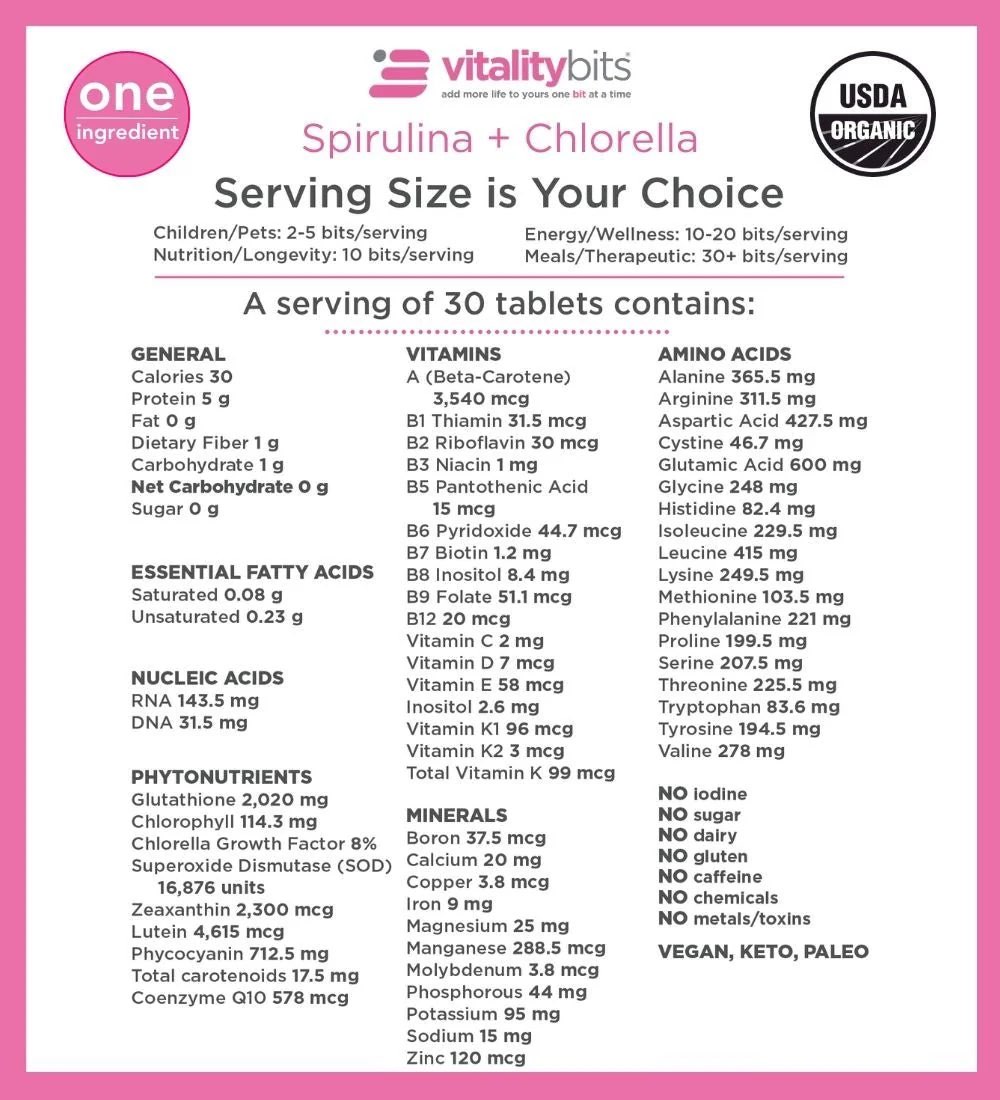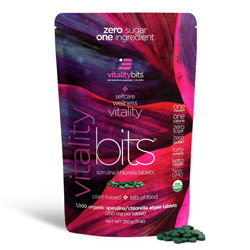
As pet parents, we want to ensure our dogs and cats live long, healthy, and happy lives. One of the best ways to support your furry friend’s overall well-being is by providing them with quality nutrition. While most pet owners focus on their pet’s food, incorporating high-quality supplements can make a world of difference. One such supplement gaining popularity for its health benefits is Vitalitybits. But how exactly can Vitalitybits enhance your pet’s health? Let’s dive in.
What Are Vitalitybits?
Vitalitybits are a plant-based supplement made from nutrient-rich algae. They are packed with a range of vitamins, minerals, and antioxidants that can benefit your pets in numerous ways. These little bits are made from algae like chlorella and spirulina, both known for their exceptional health-boosting properties. In essence, Vitalitybits work exceptionally well as a food therapy by providing your pet with the kind of all-natural, whole-food nutrition that helps fill any nutritional gaps in their diet.
1. Boosting Immune Health & Reducing Seasonal Allergies
A strong immune system is essential for pets to stay healthy and fight off illness. Vitalitybits are packed with powerful antioxidants from spirulina which help strengthen your dog or cat’s immune defenses by neutralizing harmful free radicals. This means your dog or cat will have a better defense against infections, allergens, and other health threats. Spirulina is especially beneficial for pets suffering from seasonal allergies, as it helps reduce inflammation and alleviate symptoms like itching, redness, and excessive shedding. Its natural antihistamine properties regulate the body’s response to an allergy caused by pollen and dust, minimizing discomfort. Additionally, spirulina supports a healthy gut microbiome, which plays a vital role in immune function and allergy relief.

2. Shiny Coat & Healthy Skin
Does your pet suffer from dry, flaky skin or lackluster fur? The omega-3s and other fatty acids found in Vitalitybits can work wonders for your pet’s skin and coat. These healthy fats promote hydration, reduce inflammation, and help maintain a shiny, soft coat. With regular use of Vitalitybits, you may notice a visible improvement in the luster of their fur, along with a reduction in skin irritations or shedding.
3. Improved Digestion
Digestive health is crucial for your pet’s overall well-being. Vitalitybits are packed with chlorophyll and other nutrients that support healthy digestion. These compounds can help regulate your pet’s digestive system, reduce bloating, and improve nutrient absorption. If your dog or cat suffers from digestive issues like constipation or an upset stomach, adding Vitalitybits to their diet could help promote a more balanced and efficient digestive process.
4. Increased Energy and Vitality
A common concern among pet owners, especially those with senior dogs or cats, is fatigue. If your pet seems sluggish or low-energy, Vitalitybits could be the key to revitalizing their daily routine. The natural ingredients in Vitalitybits can boost their energy levels and give them the vitality they need to stay active and playful. This is especially helpful for older pets who might not have the same energy levels they once had but still want to enjoy life to the fullest.

5. Better Mental Function and Focus
Spirulina is a superfood known for its cognitive benefits, and it can be just as beneficial for your pets. Vitalitybits can enhance your pet’s mental clarity, focus, and overall brain function. Whether your pet is still a young pup or kitten, or they’re entering their senior years, maintaining brain health is essential. Supplementing with Vitalitybits may help improve memory and mental sharpness, which can support better behavior and training results, particularly in older pets.
6. Support for Healthy Aging
As pets age, their bodies undergo changes that can affect their joints, mobility, and overall health. The nutrients in Vitalitybits can help support healthy aging by providing essential minerals that promote joint health, reduce inflammation, and maintain muscle tone. The antioxidants in Vitalitybits can also help mitigate the effects of aging by combating oxidative stress, making it a great option for senior pets.
How to Use Vitalitybits for Your Pet
 Incorporating Vitalitybits into your pet’s routine is simple and easy. You can sprinkle the recommended serving size directly over your pet’s food, or if your pet prefers, mix it into their favorite treats or wet food. Just be sure to follow the dosage guidelines based on your pet’s size and weight to ensure they’re getting the right amount for their needs.
Incorporating Vitalitybits into your pet’s routine is simple and easy. You can sprinkle the recommended serving size directly over your pet’s food, or if your pet prefers, mix it into their favorite treats or wet food. Just be sure to follow the dosage guidelines based on your pet’s size and weight to ensure they’re getting the right amount for their needs.
Since Vitalitybits are made from 100% natural ingredients, they’re safe for pets of all ages, from puppies and kittens to senior pets. However, as with any supplement, it’s always best to consult with your veterinarian before adding something new to your pet’s diet, especially if they have any pre-existing health conditions.
Why Choose Vitalitybits?
When it comes to choosing supplements for your pet, you want a product that’s both effective and safe. Vitalitybits stand out because they contain only pure, plant-based ingredients, with no additives, preservatives, or fillers. They’re non-GMO, gluten-free, and sustainably sourced. Plus, the algae used in Vitalitybits are of the highest quality, ensuring that your pet is receiving the most potent nutrients available.
Final Thoughts
Supporting your pet’s health goes beyond just feeding them good food—it’s about ensuring they get all the nutrients they need for optimal wellness. Vitalitybits offer a convenient and powerful way to do just that. Whether you’re looking to boost their immune system, improve their skin and coat, or help support their gut health, Vitalitybits could be the perfect addition to their daily routine.
Give your pets the gift of health with Vitalitybits and watch them thrive! Your furry friends will thank you with wagging tails, happy purrs, and plenty of love.



